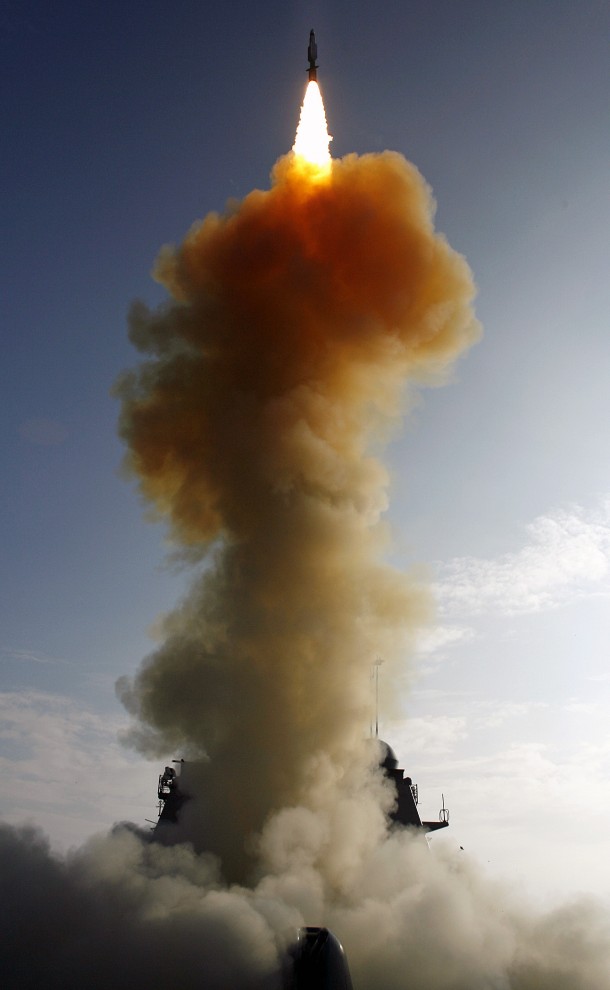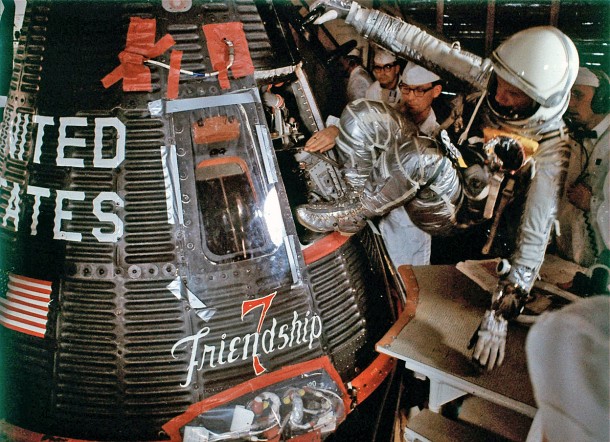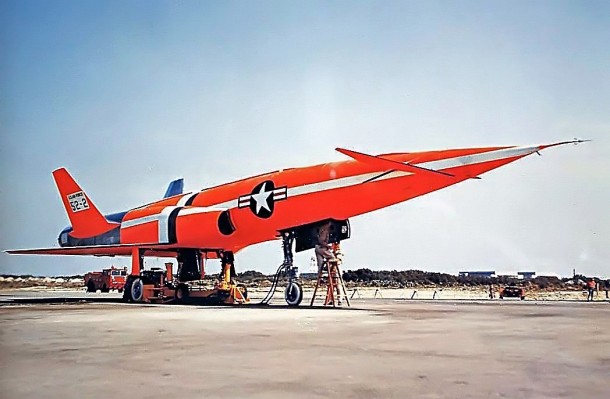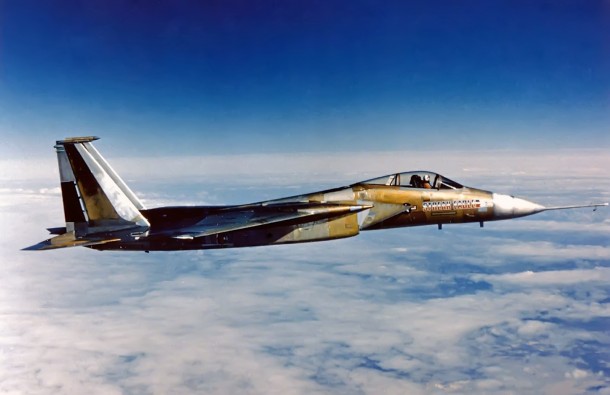
Seven years ago this month, a United States Navy STANDARD Missile SM-3 Block IA interceptor engaged and destroyed a defunct NRO satellite at an altitude of 133 nautical miles. The relative velocity at intercept was in excess of 22,000 mph.
The United States Navy/Raytheon Missile Systems SM-3 (RIM-161) is the sea-based arm of the Missile Defense Agency’s Ballistic Missile Defense System (BMDS). The 3-stage missile carries a Kinetic Warhead (KW) that provides an exoatmospheric hit-to-kill capability.
In order to ensure a lethal hit, the SM-3 KW guides to a specific aimpoint on the target’s airframe. The ability to reliably do so has been impressively demonstrated in a series of intercept flight tests that began in 2002.
SM-3 rounds are launched from the MK-41 Vertical Launcher System (VLS) aboard United States Navy cruisers and destroyers. The at-sea basing concept provides for a high degree of operational flexibility in the ballistic missile intercept mission.
The Lockheed Martin-built USA-193 was launched on a classified mission from California’s Vandenberg Air Force Base (VAFB) at 2100 UTC on Thursday, 14 December 2006. However, shortly after reaching orbit, contact with the 5,000-lb defense satellite was lost.
By January 2008, USA-193′s orbit had decayed to such an extent that its reentry back into the earth’s atmosphere appeared imminent. Such events raise concerns for the safety of those on Earth who reside within the debris impact footprint. However, there was an additional concern in the case of USA-193. The satellite still had about 1,000-lbs of hydrazine onboard.
Should the USA-193 hydrazine tank survive reentry, those living in the impact area would be exposed to a highly toxic cloud of the volatile substance. Officials concluded that the safest thing to do was to destroy the satellite before it reentered the atmosphere.
On Thursday, 21 February 2008, the USS Lake Erie was on station in the Pacific Ocean somewhere west of Hawaii. The US Navy cruiser fired a single SM-3 interceptor at 0326 UTC. Minutes later, the missile’s KW took out the satellite and dispersed its hydrazine load into space. Mission accomplished!
In the aftermath of the satellite take-down, Russia and others predictably accused the United States of using the USA-193 hydrazine issue as an excuse to demonstrate SM-3′s anti-satellite capability. While such capability was indeed demonstrated, noteworthy is the fact that all systems modified to execute the satellite intercept have subsequently been returned to a ballistic missile defense posture.

Fifty-three years ago this week, Project Mercury Astronaut John H. Glenn, Jr. became the first American to orbit the Earth. Glenn’s spacecraft name and mission call sign was Friendship 7.
Mercury-Atlas 6 (MA-6) lifted-off from Cape Canaveral’s Launch Complex 14 at 14:47:39 UTC on Tuesday, 20 February 1962. It was the first time that the Atlas LV-3B booster was used for a manned spaceflight.
Three-hundred and twenty seconds after lift-off, Friendship 7 achieved an elliptical orbit measuring 143 nm (apogee) by 86 nm (perigee). Orbital inclination and period were 32.5 degrees and 88.5 minutes, respectively.
The most compelling moments in the United States’ first manned orbital mission centered around a sensor indication that Glenn’s heatshield and landing bag had become loose at the beginning of his second orbit. If true, Glenn would be incinerated during entry.
Concern for Glenn’s welfare persisted for the remainder of the flight and a decision was made to retain his retro package following completion of the retro-fire sequence. It was hoped that the 3 straps securing the retro package would also hold the heatshield in place.
During Glenn’s return to the atmosphere, both the spent retro package and its restraining straps melted in the searing heat of re-entry. Glenn saw chunks of flaming debris passing by his spacecraft window. At one point he radioed, “That’s a real fireball outside”.
Happily, the spacecraft’s heatshield held during entry and the landing bag deployed nominally. There had never really been a problem. The sensor indication was found to be false.
Friendship 7 splashed-down in the Atlantic Ocean at a point 432 nm east of Cape Canaveral at 19:43:02 UTC. John Glenn had orbited the Earth 3 times during a mission which lasted 4 hours, 55 minutes and 23 seconds. Within short order, spacecraft and astronaut were successfully recovered aboard the USS Noa.
John Glenn became a national hero in the aftermath of his 3-orbit mission aboard Friendship 7. It seemed that just about every newspaper page in the days following his flight carried some sort of story about his historic fete. Indeed, it is difficult for those not around back in 1962 to fully comprehend the immensity of Glenn’s flight in terms of what it meant to the United States.
John Herschel Glenn, Jr. will turn 94 on 18 July 2015. His trusty Friendship 7 spacecraft is currently on display at the Smithsonian National Air and Space Museum in Washington, DC.

Fifty-nine years ago this month, the USAF/North American X-10 experimental flight research vehicle achieved a maximum speed of Mach 2.05 during its 19th test flight. The mark established a new speed record for turbojet-powered aircraft.
The precedent set by the Nazi V-1 and V-2 Vergeltungswaffen (Vengeance Weapons) in World War II motivated the United States to launch a post-war effort to develop a strategic range-capable missile capability. The earliest example in this regard was the USAF/North American Navaho (SM-64).
Known as Project MX-770, the Navaho was developmental effort to deliver a nuclear warhead at a range of 5,500 nm. The Navaho configuration consisted of a rocket-powered first stage and a winged second stage utilizing ramjet propulsion. The second stage was designed to cruise at Mach 2.75.
The X-10 was a testbed version of the Navaho second stage. The X-10 measured 66 feet in length, sported a wingspan of 28 feet and had a GTOW of 42,000 lbs. The sleek aircraft was powered by twin Westinghouse J40-WE-1 turbojets. These powerplants burned JP-4 and were each rated at 10,900 lbs of sea level thrust in full afterburner.
The X-10 was a double sonic-capable aircraft. It had an unrefueled range of 850 miles and a maximum altitude capability of 44,800 feet.
The X-10 vehicle flight surfaces included elevons for pitch and roll control and twin rudders for yaw control. Canard surfaces were employed for pitch trim. The aircraft was designed to take-off, maneuver and land under external control provided by either airborne or ground-based assets.
A total of thirteen (13) X-10 airframes were constructed by North American. Flight testing originated at the Air Force Flight Test Center (AFFTC), Edwards Air Force Base, California and later moved to the Air Force Missile Test Center (AFMTC) at Cape Canaveral in Florida.
There was a total of twenty-seven (27) X-10 flight tests. Fifteen (15) flight tests took place at the AFFTC between October of 1953 and March of 1955. Twelve (12) flight tests were conducted at the AFMTC between August 1955 and November 1956.
X-10 airframe GM-52-1 (GM-52-2 pictured above) achieved the highest speed of the type’s flight test series. On Wednesday, 29 February 1956, the aircraft recorded a peak Mach Number of 2.05 during the 19th flight test of the X-10 Program. At the time, this was a record for turbojet-powered aircraft. The record mission originated from and recovered to the runways at AFMTC.
While the X-10 Program produced a wealth of aerodynamic, structural, flight control and flight performance data, test vehicle attrition was extremely high. The lone X-10 to survive flight testing was airframe GM-19307. It is currently on display at the Museum of the United States Air Force at Wright-Patterson Air Force Base in Dayton, Ohio.

Forty years ago this week, a USAF/McDonnell-Douglas F-15A Eagle Air Superiority Fighter zoomed to an altitude of 30 km (98,425 feet) in an elapsed time of 207.8 seconds from brake release. The pilot for the record-breaking mission was USAF Major Roger Smith.
Operation Streak Eagle was a mid-1970′s effort by the United States Air Force to set eight (8) separate time-to-climb records using the then-new McDonnell-Douglas F-15 Air Superiority Fighter. These record-setting flights originated from Grand Forks Air Force Base in North Dakota.
Starting on Thursday, 16 January 1975, the 19th pre-production F-15 Eagle aircraft (S/N 72-0119) was used to establish the following time-to-climb records during Operation Streak Eagle:
3 km, 16 January 1975, 27.57 seconds, Major Roger Smith
6 km, 16 January 1975, 39.33 seconds, Major Willard Macfarlane
9 km, 16 January 1975, 48.86 seconds, Major Willard Macfarlane
12 km, 16 January 1975, 59.38 seconds, Major Willard Macfarlane
15 km, 16 January 1975, 77.02 seconds, Major David Peterson
20 km, 19 January 1975, 122.94 seconds, Major Roger Smith
25 km, 26 January 1975, 161.02 seconds, Major David Peterson
The eighth and final time-to-climb record attempt of Operation Streak Eagle took place on Saturday, 01 February 1975. The goal was to set a new time-to-climb record to 30 km. The pilot was required to wear a full pressure suit for this mission.
At a gross take-off weight of 31,908 pounds, the Streak Eagle aircraft had a thrust-to-weight ratio in excess of 1.4. The aircraft was restrained via a hold-down device as the two Pratt and Whitney F100 turbofan engines were spooled-up to full afterburner.
Following hold-down and brake release, the Streak Eagle quickly accelerated during a low level transition following take-off. At Mach 0.65, Smith pulled the aircraft into a 2.5-g Immelman. The Streak Eagle completed this maneuver 56 seconds from brake release at Mach 1.1 and 9.75 km. Rolling the aircraft upright, Smith continued to accelerate the Streak Eagle in a shallow climb.
At an elapsed time of 151 seconds and with the aircraft at Mach 2.2 and 11.3 km, Smith executed a 4-g pull to a 60-degree zoom climb. The Steak Eagle passed through 30 km at Mach 0.7 in an elapsed time of 207.8 seconds. The apex of the zoom trajectory was about 31.4 km. With a new record in hand, Smith uneventfully recovered the aircraft to Grand Forks AFB.
Operation Streak Eagle ended with the capturing of the 30 km time-to-climb record. In December 1980, the aircraft was retired to the USAF Museum at Wright-Patterson Air Force Base in Dayton, Ohio. It is currently held in storage at the Museum and no longer on public display.




